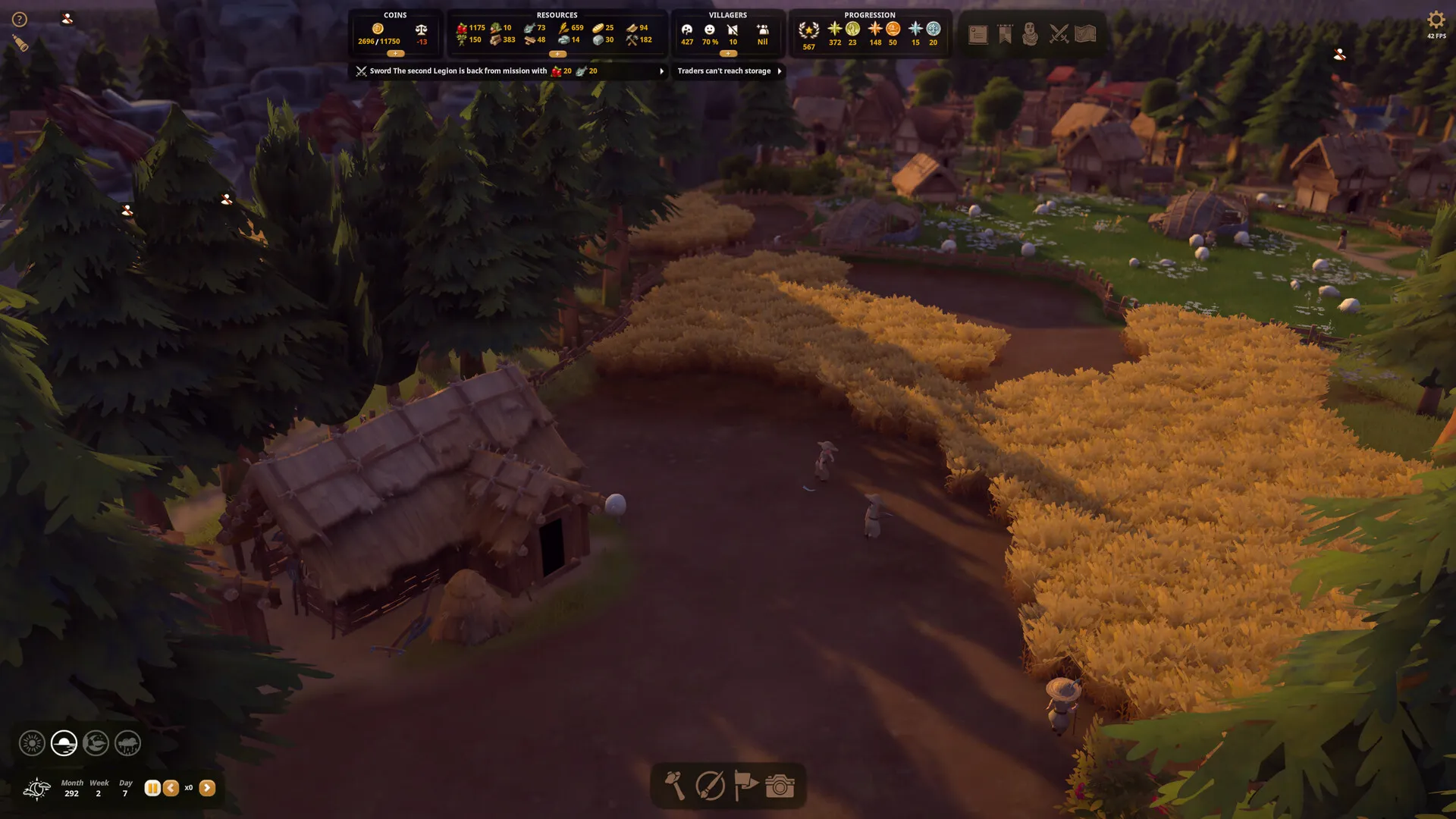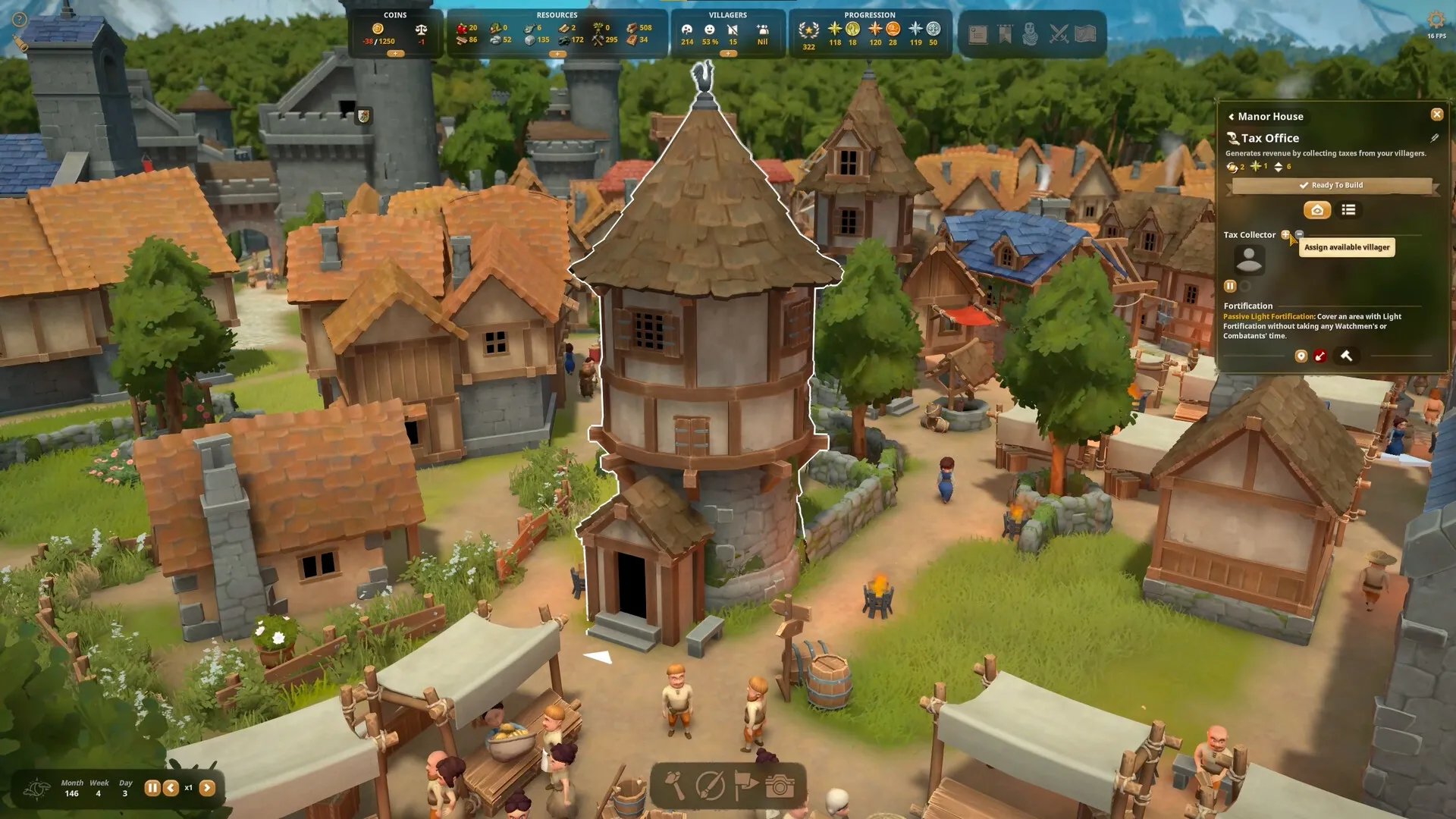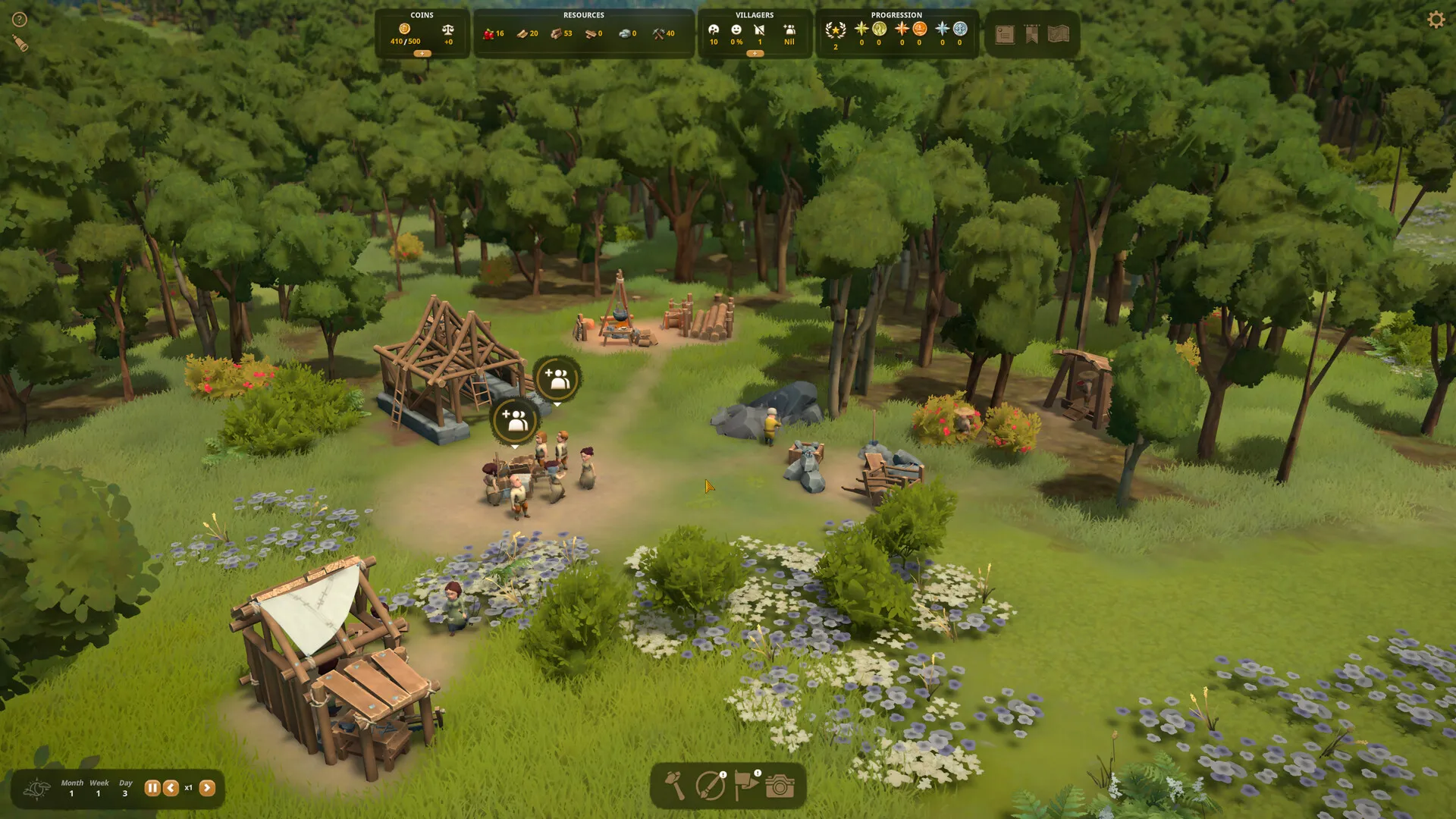Foundation presents a creative take on city building where a humble village gradually expands into a dynamic settlement. The game invites players to step into a medieval setting filled with detailed management tasks and an assortment of surprises.
Starting with a small group of villagers and a few basic structures, each choice shapes the unfolding narrative of growth and resilience.
The game’s design offers a careful balance between structured challenges and spontaneous moments that emerge as the settlement develops. Players can adjust the difficulty and personalize numerous settings, making the experience welcoming for newcomers while providing depth for seasoned strategists.
The medieval backdrop is brought to life by a mix of playful visuals and realistic simulation. Every building exudes character, and the organic layout of the village reflects the natural progression of a community in motion.
Each element—from the initial construction of simple shelters to the planning of intricate public spaces—serves as a stepping stone in a larger narrative of ambition and everyday struggles.
The steady rhythm of tasks and milestones connects gameplay to its narrative, producing moments that resonate emotionally. This interplay between meticulous management and unfolding story prompts a reflective consideration of how each decision crafts the living, breathing history of the village.
Blueprints of Life: The Core Gameplay Mechanics
Foundation introduces players to its systems with a well-structured tutorial that gently guides them through a series of challenges. The initial lessons help familiarize players with simple tasks, gradually introducing more intricate operations as they progress.
This step-by-step approach gives players confidence in managing resources, assigning tasks, and understanding the game’s underlying logic without overwhelming them from the start.
A notable feature is how the game allows citizens to shape the town’s physical layout. As villagers move naturally from one location to another, their repeated paths form roads and walkways. This process results in an evolving, organic design that sets the game apart from the rigid patterns seen in other city-building titles.
The organic growth of the settlement makes each playthrough feel different, with citizens contributing to the development in unexpected ways. Watching these natural routes emerge not only provides a visual cue of the town’s expansion but also emphasizes the community-driven spirit at the heart of the game.
Another significant aspect is the interactive zone designation. Players can mark specific areas for residential development, resource extraction, and even restricted zones to control movement.
The intuitive painting system makes it easy to designate these zones, ensuring that the player’s intent is clearly communicated to the game’s simulation.
This mechanism minimizes the need for constant micromanagement while still allowing for detailed adjustments as the village expands.
The control scheme offers flexibility, letting players experiment with the layout and quickly see the impact of their decisions. The balance between structured guidance and freedom of action invites players to invest their own creativity in shaping a living, breathing settlement.
Architectural Alchemy: Crafting the Living Village
Foundation offers a construction system that gives players freedom to arrange buildings without a fixed grid. Each structure is designed with modular components, allowing for creative placement and flexible expansion.
Players can place buildings wherever they prefer, making the arrangement of a village feel organic rather than forced by preset patterns. This system invites a careful balancing act where the freedom of placement comes with the responsibility of maintaining functional connections between various structures.
The game presents a wide range of building types, from basic huts used by early builders to more advanced establishments like lumber camps, administrative offices, and religious structures. Structures such as manor houses and castles evolve through progressive upgrades, with each additional module enhancing their role in the growing settlement.
This tiered system creates a layered experience where every upgrade contributes new capabilities and influences how citizens interact with their environment.
Tools provided in Foundation allow players to modify building layouts and refine visual details to suit their personal style.
Whether adjusting the spacing between homes or experimenting with the placement of decorative elements, every choice affects the character of the village. The design process is both deliberate and responsive, encouraging a creative mindset where the arrangement of structures reflects a careful vision.
The aesthetic choices players make have a clear impact on the atmosphere of the settlement, reinforcing the connection between mechanical decisions and the emotional tone of the game.
The way these building systems interweave technical aspects with artistic considerations creates a living space that is as much a work of creativity as it is a strategic project. This interplay prompts players to consider how every construction decision shapes the daily life and appearance of the settlement, leaving room for unexpected transformations as the village takes shape.
At the Heart of the Settlement: Managing Life and Labor
Foundation’s simulation of daily life invites players to oversee a living ecosystem of resource collection and human activity.
The process of gathering essential supplies—wood, stone, and food—is presented as a constant rhythm where assigning workers to tasks becomes a subtle art. Players must keep a close eye on each camp and workshop, ensuring that the basic needs of the village are met while the community steadily grows.
One might observe how a well-placed lumber camp not only fuels building projects but also supports a thriving market as the settlement expands.
The game also paints a picture of how its residents lead their lives, from the humble beginnings of serfs to the emergence of more demanding citizen classes.
The simulation of daily routines creates a scene where villagers work in the fields, contribute to construction, or offer services within specialized buildings.
This evolving spectrum of citizen behavior reflects the ongoing story of a community adapting to change. As citizens upgrade their roles, their expectations shift, introducing new challenges that require careful resource distribution and labor management.
The user interface plays a critical role by conveying real-time information through various indicators and alerts.
Although the system occasionally presents challenges with its overlays—such as delayed updates or vague notifications—these moments offer players an opportunity to experiment with alternative strategies for monitoring progress.
Minor glitches may require a brief pause or a re-access of the menu, a small price for a simulation that captures the ebb and flow of daily life.
This intricate management system not only supports the practical aspects of town growth but also sets the stage for personal, often unexpected, moments that make each playthrough a new experience, leaving room for players to question how the interplay between resource management and citizen behavior might shape their village’s future.
Economic Systems and Trade: The Lifeblood of the Settlement
Foundation introduces a market system where each product takes a specific stand, providing a clear structure for the distribution of goods.
The arrangement of market stalls creates a system where resources such as lumber, stone, and food travel from production sites to consumers in a manner that mirrors real-world supply channels. This system keeps players on their toes, as managing production and meeting citizen demand becomes an ongoing puzzle of timing and placement.
The game prompts players to observe how a shift in one area can cause ripples across the economic network, leading to moments of satisfaction when supply matches the steady pulse of the market.
Taxes serve as the primary source of revenue, and the game offers a thoughtful model for financial management. Players set tax levels that affect the mood of the inhabitants, requiring careful adjustment to prevent unrest.
The interplay between generating income and maintaining citizen approval creates moments of tension and relief that enrich the overall experience. Adjustments to the tax system require players to weigh immediate benefits against long-term stability, a balancing act that mirrors real fiscal challenges.
Trade with neighboring towns introduces another layer of complexity. Unlocking these connections opens a route for new resources and special blueprints that expand the possibilities for building and upgrading.
The interaction with external markets challenges players to think about how isolated decisions within their own settlement can have far-reaching effects. The dynamic exchange between local production and external influences presents opportunities for creative strategies, as players explore how economic choices shape the evolving narrative of their community.
This detailed economic framework invites players to experiment with different approaches, keeping the settlement’s pulse ever-changing and full of unexpected turns.
Visuals, Sound, and Immersive Atmosphere
Foundation offers a striking art style that brings the medieval village to life with a playful yet detailed appearance. The visuals use a comic-like charm that transforms each building and street into a canvas of animated energy.
Reworked graphics and smooth animations capture the day-to-day evolution of the settlement, reflecting the movement of citizens and the progress of construction. The visual presentation gives a sense of continuity and warmth that pulls players into the evolving story of their own creation.
Sound plays a major role in crafting the experience, with careful attention given to the ambient effects that fill every corner of the village.
The audio design captures the buzz of busy market days, the gentle murmur of conversations, and the natural background sounds that emerge as the town grows. Detailed effects highlight the clatter of tools in workshops and the distant calls of villagers, enhancing each moment with a lively sense of presence.
The integration of graphics and audio creates an environment that feels alive, where every visual and auditory cue adds to the experience of managing a thriving community.
The art and sound work together to build an atmosphere that is both playful and full of subtle detail, inviting players to lose themselves in the daily routines of their citizens.
This close attention to the sensory aspects of gameplay provides a layer of emotional depth, as players notice how the rhythm of visual changes is matched by a shifting soundscape.
In watching the settlement evolve, one is prompted to consider the interplay between creative design and interactive storytelling, a dialogue that continues to evolve with each new development in the town.
The Review
Foundation
Foundation delivers an engaging city builder that combines interactive design with rich narrative elements. The flexible gameplay mechanics and organic evolution of the settlement offer a satisfying challenge. Its art style and sound create an immersive atmosphere that enhances the experience, turning routine management tasks into moments of genuine discovery.
PROS
- Detailed simulation of citizen behavior
- Natural evolution of the settlement
- Flexible building system and customization
- Immersive visual style and audio design
CONS
- Occasional issues with interface updates
- Steep learning curve for new players


















































